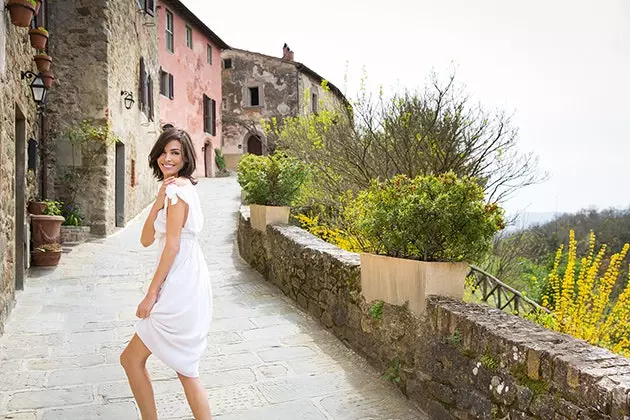
Inés Sastre accompanies us through the cobbled streets of the medieval town of Il Borro
Perched on a ridge, across a small stone bridge, the medieval village of barely thirty houses in earth colors seems to float on the fluffy green lush that accompanies the stream. The town is actually part of an agritourism resort where the houses have been converted into multi-room suites , living room with fireplace and kitchen. Some have a patio with sun and shade and behind the church an infinity pool is being built that overlooks the forest. It smells of flowers and lazy days.
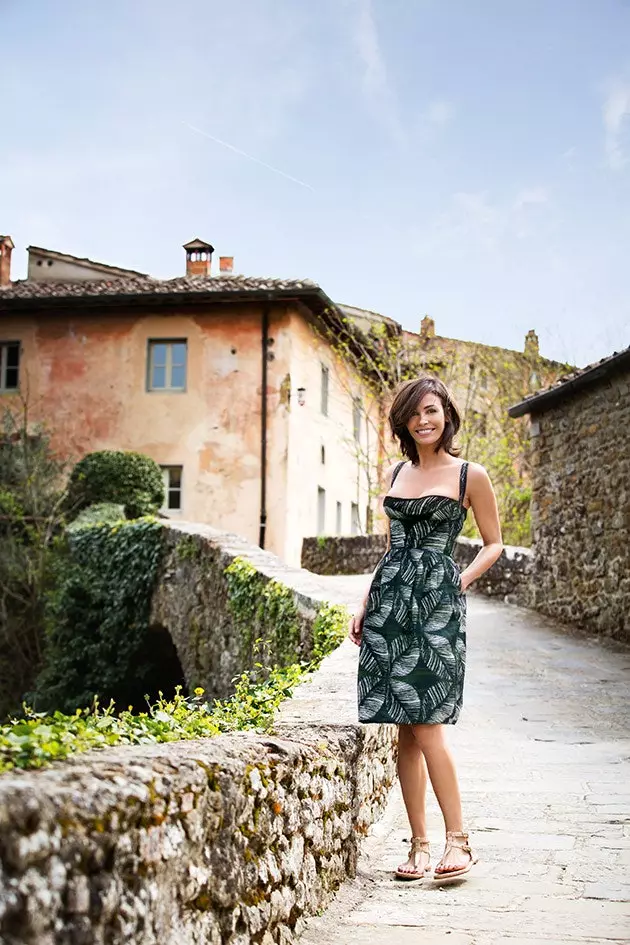
Inés Sastre on the bridge of the village Il Borro
The little town faces a large pink facade neoclassical mansion raised to another height and surrounded by cypresses. It has ten bedrooms, elegant rooms for organizing large dinners, a gym and a beautiful indoor swimming pool with a Roman atmosphere that opens onto flowery gardens. It is rented whole, with apron and cap service included . Beyond the labyrinth of gardens and forests extend hectares and hectares of agricultural fields, lined with olive trees and vineyards, on which another twenty larger villas are accommodated. Il Borro is located next to the village of San Giovanni Valdarno, in the rural heart of a triangle formed by florence (at one hour) , sienna (at another time) and Arezzo (at 20 minutes). It is in the center but outside of everything. Of course, none of this looked like this when Ferruccio Ferragamo came across the property by chance during a hunting day, just over twenty years ago.
The main villa had been bombed by the Germans during their retreat from the World War II , like the bridge, and the farmland, which had once been a benchmark for its production, had been abandoned to its fate for dozens of years. Il Borro then belonged to Amadeo of Savoy, fifth Duke of Aosta, and previously, it had passed through the hands of some of the most illustrious families in Europe : the Hohenlohe, the Medici Tornaquinci, the Dal Borro... the same ones that made this region the nerve center of almost everything.
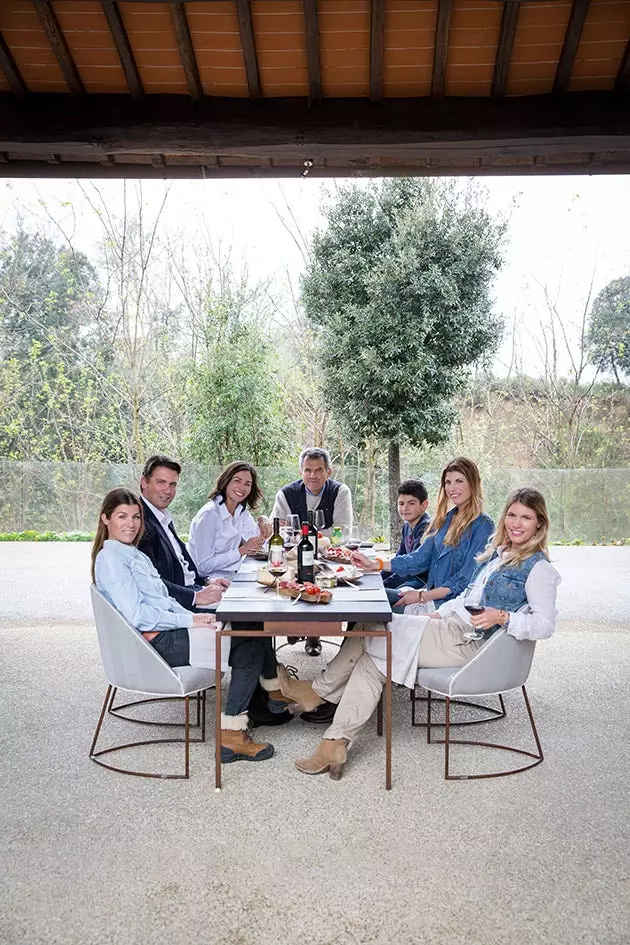
Ferruccio with his children and Inés Sastre
salvatore ferragamo , the shoemaker to the stars, made his last name famous in the 1920s by turn women's shoes into works of art (remember Dorothy's shoes in The Wizard of Oz ? and those of Marilyn Monroe in Temptation lives above ?) .
But today, thanks to the following generations, led by Wanda , his widow, and their son Ferruccio , the Ferragamo empire expands to a collection that includes clothing, bags and accessories for men and women, perfumes , as well as a museum, a small portfolio of boutique hotels in Florence and Rome (managed by another branch of the family) and now, this agritourism resort that gives its name to an oil and wine cellar that produces a superb white, Lamelle , and three solid reds perfect for accompanying Tuscan meat dishes. The man in charge of Il Borro, as well as the success of the cellar , is one of his eldest sons, Salvatore, a self-confessed passionate about biodynamic agriculture.
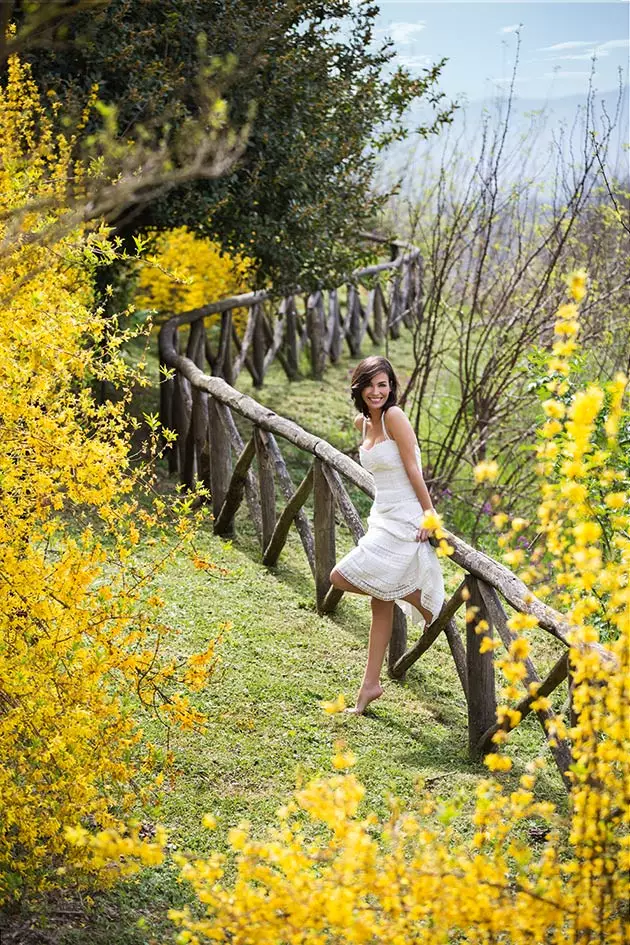
Flowers flood the property
"Isn't it one of the most beautiful places in the world?" , Ferruccio confesses to me that there is still not a day that he does not think about it. As soon as he saw it he knew it was where he wanted to spend time with his family, but he was soon convinced the possibilities of the land . He would recover the former splendor of him to offer luxury vacation in the purest Tuscan tradition and this rest proposal would be accompanied by productive activities, with artisan workshops and a farm where they raise Chianina calves, cultivate pesticide-free ingredients and, of course, making a wine that meets the quality standards of his brand. His goal was never to reinvent the fairy tale, but bring life back to this forgotten corner of Tuscany , create jobs for families in the area and turn Il Borro into a self-sufficient farm also energetically.
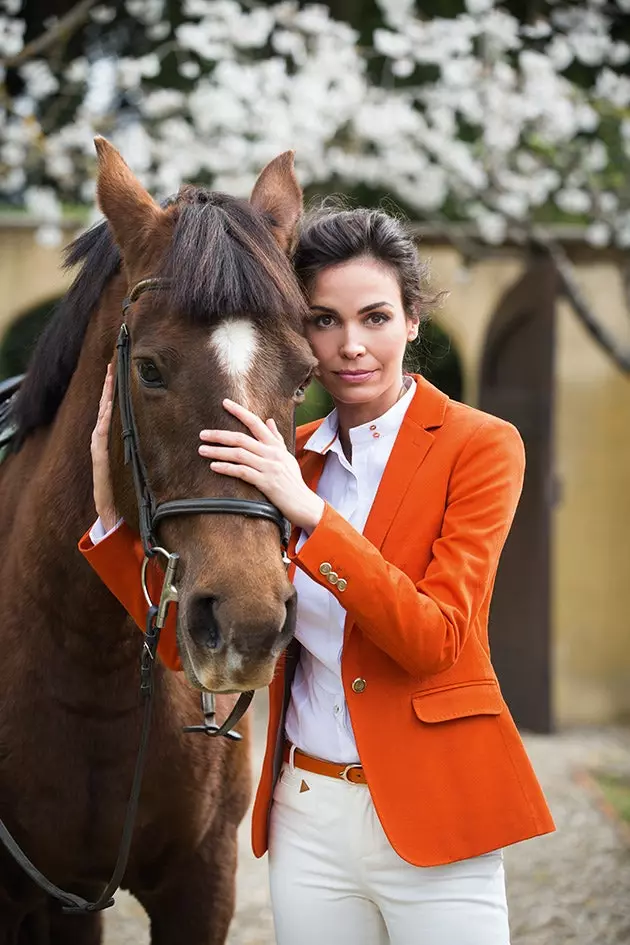
Inés poses next to one of Il Borro's horses
If Italy were seen as a museum, the region of Tuscany it would be one of its most visited rooms , always with crowds swirling around certain ballot boxes. Since Dante Y Boccaccio From Hollywood movies to Art History books, Tuscany has come down to us as a feast for the senses . considerate the linguistic aristocracy of Italy , this is a geography of inspiration and creation.
With an artistic heritage without comparison in the world, its vespas, its designers and its hills outlined by vineyards and cypresses –that medieval green lance, which the poet sang–, Tuscany feels like a space to contemplate and learn from, an enviable corner where beauty is appreciated and the creed of la dolce vita is practiced. But beyond all that, Tuscany is part of an emotional cartography. Like Provence, New York or the Pacific Islands, Tuscany is also a state of mind. A kind of happy and optimistic nostalgia.
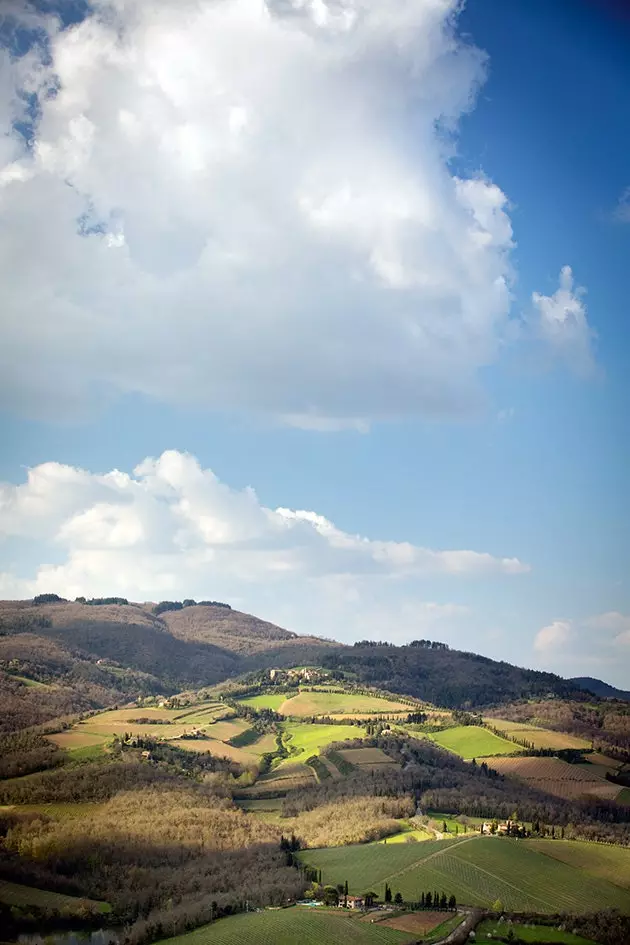
Tuscany: gentle hills that offer good oils and better wines
It's one of those prescription places, especially indicated for love ailments and artists with identity crisis . Go for a few days to eat well, read, take naps at the wrong time and you'll see. To live life elliptically, as Fellini said. To take advantage of it while it is within our reach. Idealized by Anglo-Saxon travellers, this Mediterranean spontaneity is completely familiar to us.
However, Tuscany has a dual identity, nobleman and peasant , which makes it irresistible even for those of us who are used to long after-meals washed down with wine. Because let's face it, at some point in our lives, we have all dreamed of kissing (or eating an ice cream) next to the bridges of the Arno river or with a distant relative inviting us to spend a summer at his country house. or with buy a piece of paradise where to retire.
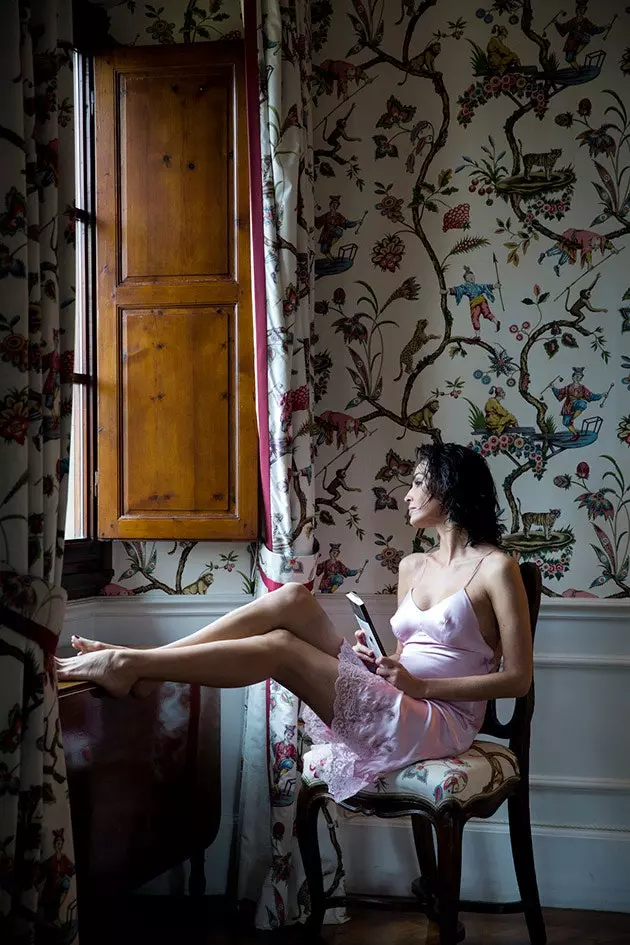
Inés Sastre looks out the window of her suite at Il Borro
Rebuilt “stone by stone”, as they like to count, it took seven years to restore the main house and the access roads. Amanda Henderson , a British architect with whom Ferruccio was married for 32 years, she was in charge of such a great work, investigating the archives to obtain the real image of how was it in your day . The decoration, which faithfully follows the luxury rural vacation style of the estate, was commissioned by Ferruccio's current wife, Ilaria , with whom he has an eleven-year-old son. No standardized or monochromatic interiors.
Here everything is unique . Inherited pieces and purchased furniture and objects “at auctions here and there, especially in Italy” , they explain to me. Protected by anonymity there are valuable treasures, such as the piano that discreetly presides over the hall of the main villa. It belonged to Chopin . The wooden floor creaks under our steps and the ceiling shines with recovered frescoes. A bell rings above our heads and makes the headboard of the bed rattle, as if the lady of the house is angry. The historical burden is felt on the skin , without fanfare, in a natural way.
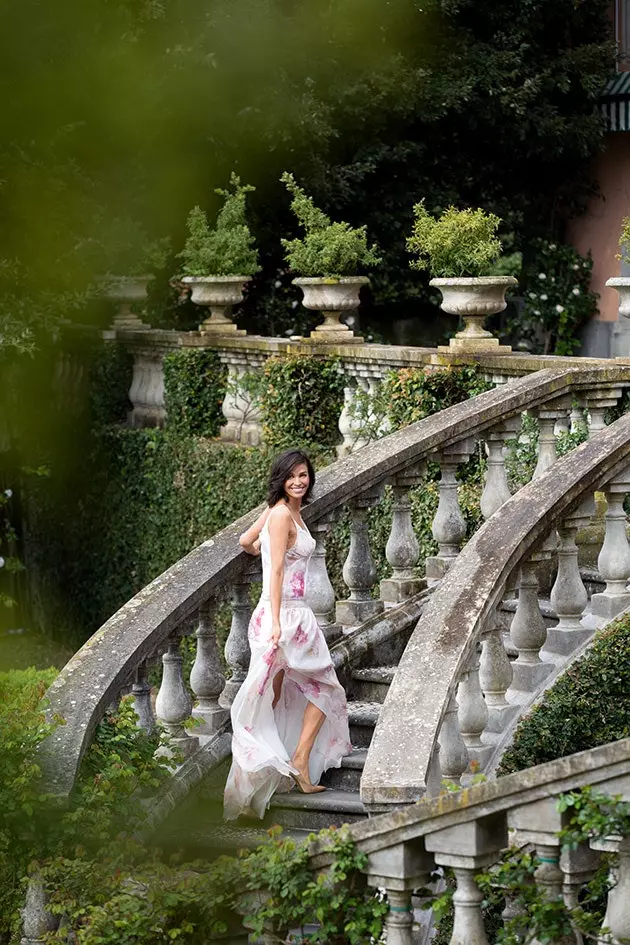
For Inés Sastre: "this place is a dream"
Boss , Ferruccio's German pointer howls disconsolately across the pool. He looks for his missing master. He ignores my calls and he runs away through the rose bushes . Each of Ferruccio's sons has a house on the property and when they are around here, something frequent, it is usual to meet them at lunchtime in the VinCafe . From time to time gala dinners and balls are held in L'Orangerie, the majestic pavilion , and on certain Saturdays, like today, there are football matches between the people of Il Borro (owners and employees) and the carabinieri of the town.
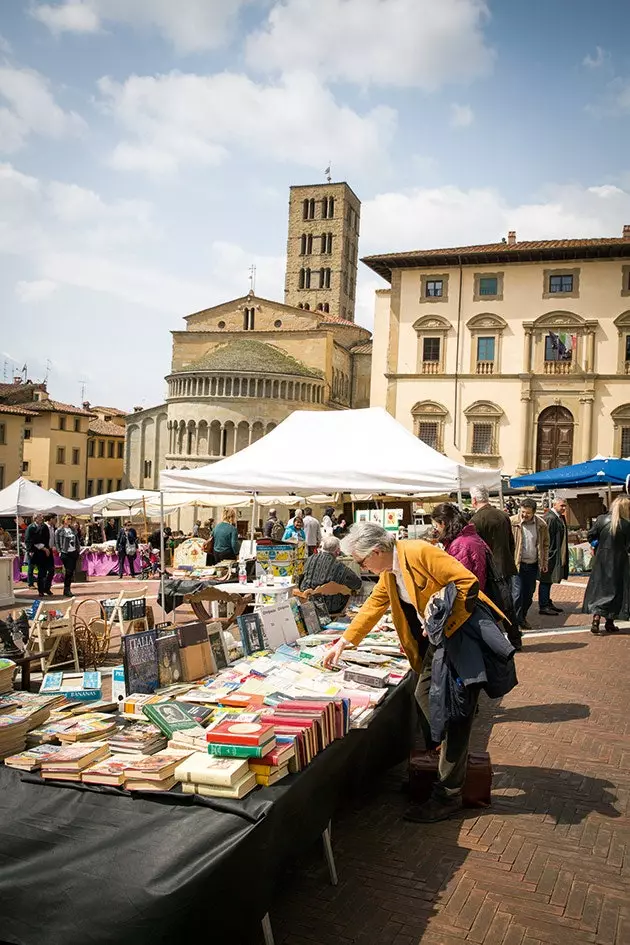
Fair of paintings and antiques in the historic square of Arezzo
Like the landscape and the traditions, the Tuscan cuisine It has stood the test of time relatively intact. It is believed that the food was the reason why the ancient etruscans Known for enjoying worldly pleasures, they settled in Tuscany for a few centuries until the Romans left them. The forests were, and still are, rich in game and the fertile land to plant those pioneering vineyards. The timeless essence of the region, today Tuscan food arouses as much interest as its artistic heritage. And it is that here where everything is arranged around a table , gastronomy and environment go hand in hand.
That's how you understand it too Andrea Campani , the chef of Il Borro, who transfers the sensations of the landscape to the palate, making a contemporary interpretation of its stories, its art, its aromas, with local seasonal ingredients. There are two restaurants at Il Borro . The VinCafe , next to the spa and a infinity pool in which to lose your gaze in the medieval town, it is a glazed space where you can have lunch or dinner informally. Breakfast is served here and you can have a good coffee (“ black as hell, strong as death and sweet as love ”, is the Tuscan formula) at any time – although remember, cappuccino is only drunk in the morning.
Meanwhile in The Osteria , more sophisticated, with its large oak tables, is where Campani gives free rein to all his imagination, although the star of the menu is something so simple (and succulent) like the chianina ribeye . And as the cornerstone of any Tuscan meal: the wine . The wine and the oil. And at Il Borro they know how to do both.
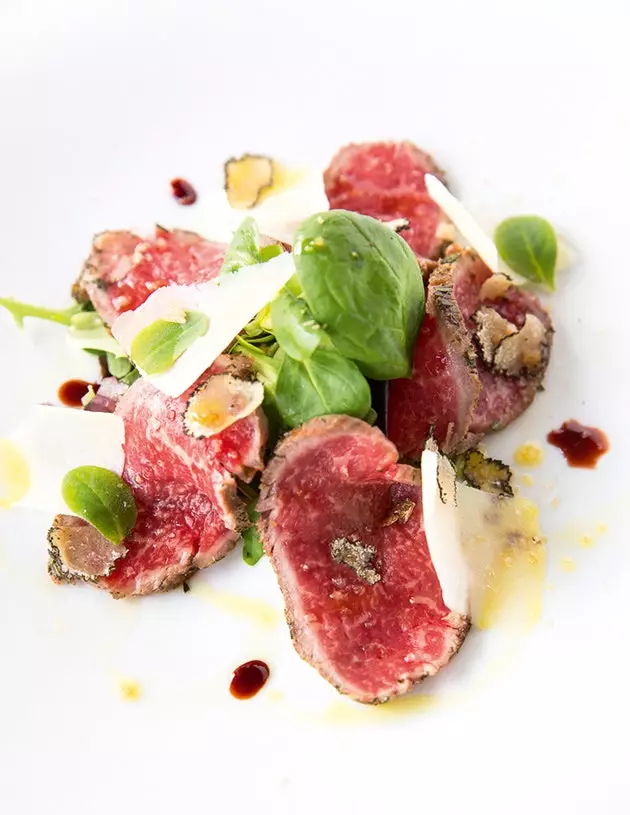
Chianina beef carpaccio
A few months ago they also opened their first restaurant in Florence, Il Borro Tuscan Bistro , a new concept youthful and elegant , halfway between trattoria, bistro and delicatessen, which might as well be one of Williamsburg's hot spots . It is located on the Arno river, just in front of the bridge of the Santa Trinita where Dante met his beloved beatrice , and around the corner of the Palazzo Spini Ferroni , the 13th century palace where the Ferragamo's have their headquarters. Here you can eat the VinCafé classics, such as regional cheese and sausage boards and the delicious salads, and some of the temporary creations of L'Osteria, in addition to the special dishes of the day: today, a trout risotto absolutely unforgettable.
Along the provincial road that leads to Arezzo, la strada Sette Ponti , it takes a few kilometers and several curves to get out of the Il Borro hills. Be careful not to use unnecessary adjectives. because they subtract credibility from the authenticity of the print. One of the seven bridges that give the strada its name, at the exit of the town of Ponte Buriano, inspired Leonardo da Vinci for his mysterious Gioconda . If you don't believe me, he peers behind the Mona Lisa's left shoulder.
* This article is published in the Condé Nast Traveler magazine July-August number 75. This issue is available in its digital version for iPad in the iTunes AppStore, and in the digital version for PC, Mac, Smartphone and iPad in the Zinio virtual kiosk (on Smartphone devices: Android, PC/Mac, Win8, WebOS, Rim, iPad) .
_ You may also be interested..._*
- 42 things to do in Tuscany once in a lifetime
- Tuscany Guide
- The 10 most beautiful villages in Tuscany
- The Tarot Garden: a Park Güell in Tuscany
- Lucca by bike: the perfect Tuscan summer
- 20 reasons to leave everything and go to Italy
- Sicily in ten towns - The ten most beautiful towns in Piedmont - 100 things about Rome you should know - Florence in ten steps and without stepping on the Uffizi - Eat Italy in nine steps
- All information about Italy
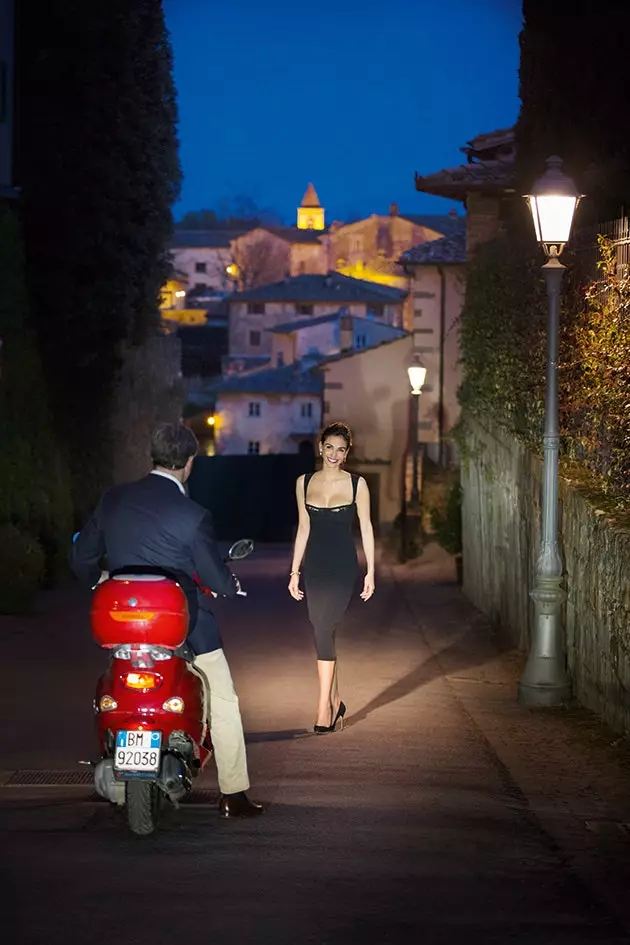
Live your Italian dream in a movie setting: Tuscany
